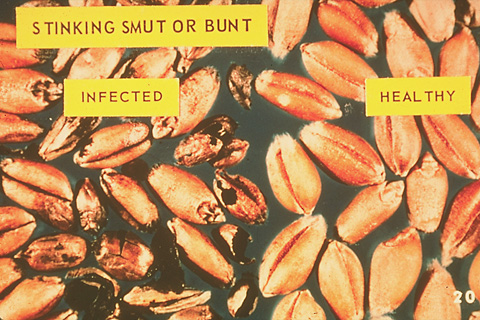
Old Bunt of Wheat
History and Importance:
- Most serious disease of wheat in Europe in middle ages
- Also known covered smut of wheat
- Confined to cooler regions
- Difficult to threshing & reduce grain quality
Etiology:
Causal organism: Tilletia controversra
Order: Ustilaginales
Family: Tillitiaceae
Symptoms:
- Pistil from smutted heads become longer
- Stamens reduced in length & breadth
- Smutted ears remain dark green for longer time than normal
- Soft black pasty mass comes out if the grains are pinched with thumb & forefinger
Disease cycle:
- Primary inoculum: spores carried on seed or present in soil
- Remain viable in soil for 10 years
Epidemiology:
- High relative humidity
- Temp 18-20 °C
Management:
- Growing of resistant varieties (Perwaz, Watan, Sehar, Shafaq)
- Use disease free seed
- Seed treatment with Agrosan GN 2%, Benlate o.3%
Download Files
Course Material
- Stem or Black Rust of Wheat
- Leaf or Brown Rust of Wheat
- Yellow or Stripe Rust of Wheat
- Brown Leaf Spot of Rice:
- Rice Blast
- Foot Rot (Bakanae Disease of Rice)
- Early Blight of Potato:
- Late Blight of Potato:
- Red Rot of Sugarcane:
- Tree Decline:
- Citrus Withertip
- Powdery Mildew of Mango
- Gram Blight
- Wheat Smut
- Old Bunt of Wheat
- New Bunt of Wheat (Karnal Bunt of Wheat)
- Difference between old and new bunt
- Principals of Plant Disease Management
- Exercise 1
- Exercise 2
- Exercise 3
- Exercise 4
- Exercise 5
- Exercise 6
- Exercise 7
- Exercise 8
- Exercise 9
- Exercise 10
- Exercise 11
- Exercise 12
- Exercise 13
- Exercise 14
- Exercise 15
- Chapters 33
- Department College of Agriculture
- Teacher
Dr. Muhammad Ahmad Zeshan


